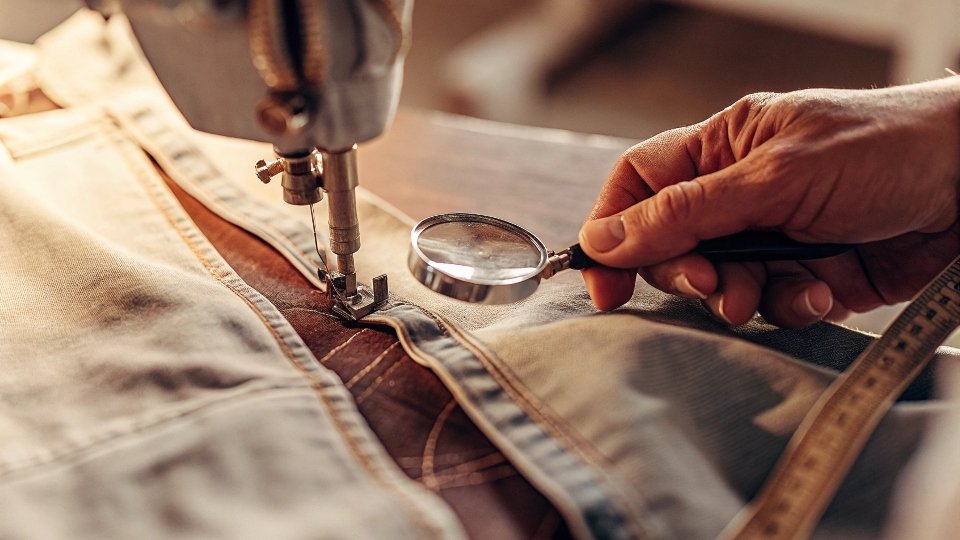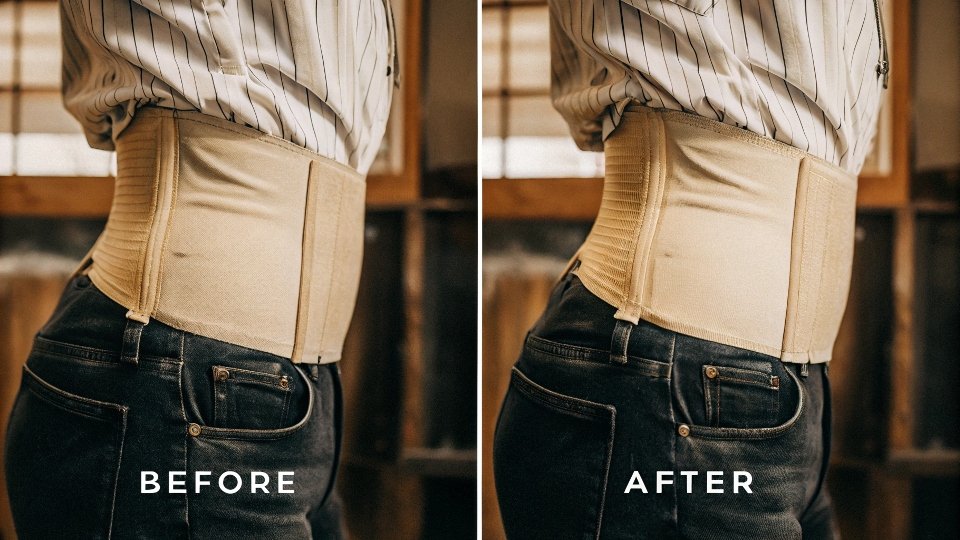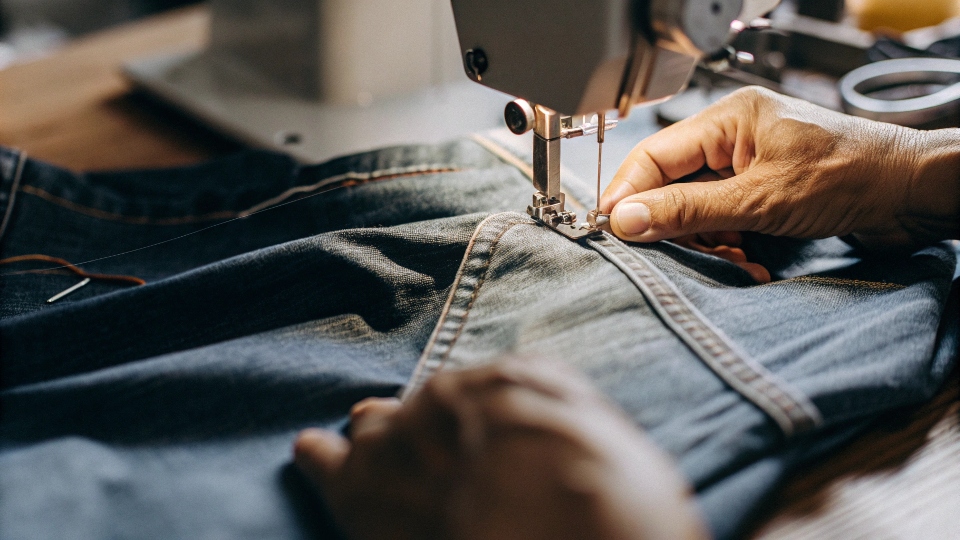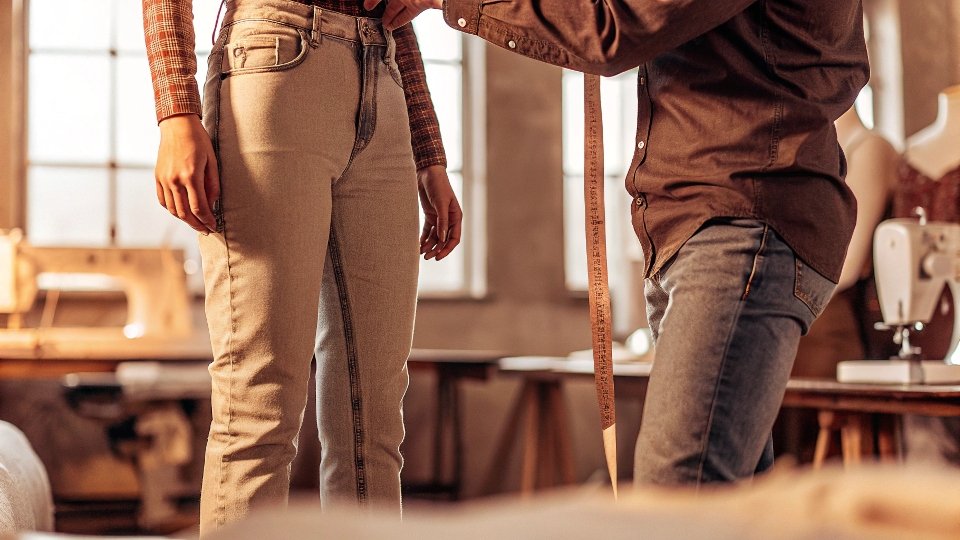You pull on your favorite pair of jeans, but they're uncomfortably tight around the waist or thighs. They’re too good to get rid of, but too small to wear.
Yes, a tailor can make jeans bigger, but only by a small amount. The process depends entirely on the hidden fabric, called seam allowance, that is folded inside the jeans' seams.
During my 20 years running a denim factory, I've seen how every millimeter of fabric counts.
When we cut the patterns for a new batch of jeans, we include a specific amount of seam allowance—the extra fabric that's used to sew the pieces together.
Making jeans smaller is easy; you just cut away fabric.
But to make them bigger, a tailor has to work in reverse. They must find that hidden seam allowance and carefully release it. It's a precise job that depends entirely on how the jeans were originally constructed.
Is there anyway to make jeans bigger?
Your jeans are just a bit too snug, and you're hoping there's a magic trick to give you that extra inch of comfort. You feel stuck with a pair you can't wear.
Yes, the primary way to make jeans bigger is by having a tailor let out the seams1. For a larger expansion, they can also add a new panel of fabric, called a gusset.
The best and most common method is letting out the seams. A tailor will turn your jeans inside out and examine the center back seam and the side seams.
If there's enough extra fabric folded in, they can undo the original stitch and sew a new one closer to the fabric's edge. This can give you an extra half-inch to one-and-a-half inches in the waist and hips.
If you need more room than that, the only other option is to add a separate piece of denim into the seam.
This is called a gusset. While a gusset can add several inches, it's a very visible alteration because it's nearly impossible to perfectly match the color and wear pattern of the new fabric to your old jeans.
Two Ways to Make Jeans Bigger
| Method | How It's Done | Pros | Cons |
|---|---|---|---|
| Letting Out Seams | Using the existing hidden seam allowance. | Invisible, clean, professional. | Limited gain (usually 1-inch max). |
| Adding a Gusset | Sewing a new panel of denim into the side seams. | Can add multiple inches of room. | Visible, hard to match fabric, costly. |
How much does it cost to tailor jeans bigger2?
You've found a pair of jeans you love that are slightly too small. Now you need to decide if the cost of altering them is worth it.
It typically costs between $25 to $50 to make jeans bigger by letting out the seams. If new fabric panels are needed, the cost can increase to $60 or more.
The cost reflects the skill and time involved, and making jeans bigger is more delicate work than making them smaller.
The price in the $25-$50 range covers the standard job of letting out the center back seam to expand the waist and seat.
If the tailor also needs to let out the side seams to give you more room in the hips, the price will be on the higher end of that range.
The final cost can also be affected by the jeans themselves. Heavy selvedge denim is tougher to sew and requires more robust equipment, which can increase the price slightly.
If the seams don't have enough fabric and you opt for adding gusset3s, the price goes up because it involves sourcing new denim and doing much more complex sewing. Think of it as a small investment to rescue a great pair of jeans.
Can a tailor fix tight jeans4?
You can barely sit down in your jeans because they're so tight across the thighs and seat. You need targeted relief, not just a bigger waist.
Yes, a tailor can fix tight jeans by targeting specific areas. They can let out the inseam for more thigh room or the center seam for more space in the seat and waist.
A good tailor can diagnose exactly where your jeans are tight and apply a specific fix. Their work is very precise, much like how a designer like Dean gives us specific measurements for every part of the jean in a tech pack.
Common Fixes for Tight Jeans
- Tight Waist and Seat: The most common problem. The tailor will let out the center back seam. This single alteration adds room to both the waist and the seat at the same time, providing significant comfort when you sit and move. Most well-made jeans have enough seam allowance here for a noticeable difference.
- Tight Thighs: If your jeans feel like they're squeezing your thighs, the solution is to let out the inseam (the seam running down the inside of your leg) and the outseam (the seam on the outside). Even a quarter-inch of extra room on each seam can make a huge difference in comfort and mobility.
- Tight Calves: For skinny jeans that are too tight on your calves, a tailor can sometimes let out the lower part of the inseam and outseam. However, many modern skinny jeans have very little seam allowance here, so this alteration is less common.
Can a tailor fix pants that are too small?
The problem isn't just with your jeans; you have other pants in your closet that have become too snug. You're wondering if they can be saved too.
Yes, a tailor can usually fix pants that are too small5, and often more easily than jeans. Dress pants and chinos typically have more generous seam allowances built into them.
The same principle of letting out the seams applies to all types of pants, but the results can be even better with non-denim trousers.
When we manufacture jeans, the construction is all about durability, with strong, flat-felled seams that don't leave a lot of extra fabric. But dress pants are made with alterations in mind6. It's very common for tailors to make dress pants bigger or smaller as a person's weight fluctuates. If you turn a pair of dress slacks or chinos inside out, you'll often see a large strip of extra fabric at the center back seam7 of the waistband and seat—sometimes enough to add a full two inches. This makes them much easier to let out compared to the limited allowance in most jeans.
Seam Allowance: Jeans vs. Dress Pants
| Pant Type | Typical Seam Allowance | Ease of Making Bigger |
|---|---|---|
| Jeans | Small (about 1/2 inch) | Difficult |
| Dress Pants | Large (1 to 2 inches) | Easy |
| Chinos | Medium (about 1 inch) | Moderate |
Conclusion
A tailor can make your jeans bigger, but the gain is modest. Success depends on the hidden seam allowance, so it's a great option for that "almost perfect" pair that just needs a little extra room.
-
Explore this method to see how it can provide a comfortable fit without compromising style. ↩
-
Get insights on tailoring costs to determine if it's worth the investment for your favorite jeans. ↩
-
Learn about gussets and how they can significantly increase the size of your jeans. ↩
-
Discover the techniques tailors use to provide comfort in tight jeans. ↩
-
Understand how tailoring can rescue your favorite pants from being too snug. ↩
-
Discover the differences in construction that make dress pants more adaptable. ↩
-
Understanding this seam is key to knowing how alterations can be made. ↩





[^6] at the center back seam](https://diznewjeans.com/wp-content/uploads/2025/10/yes-a-tailor-can-usually-fix-pants-that-are-too.jpg)




